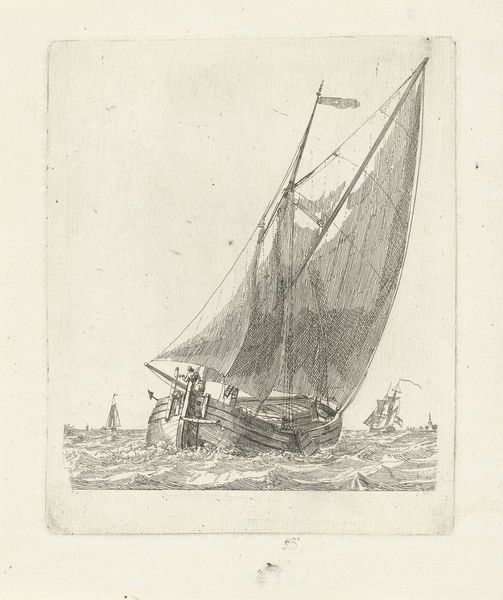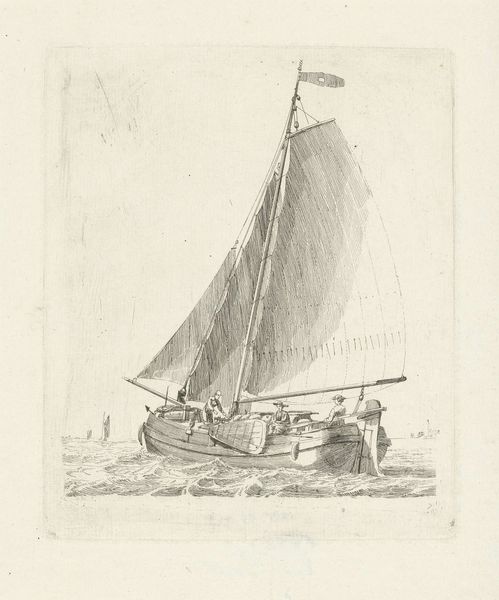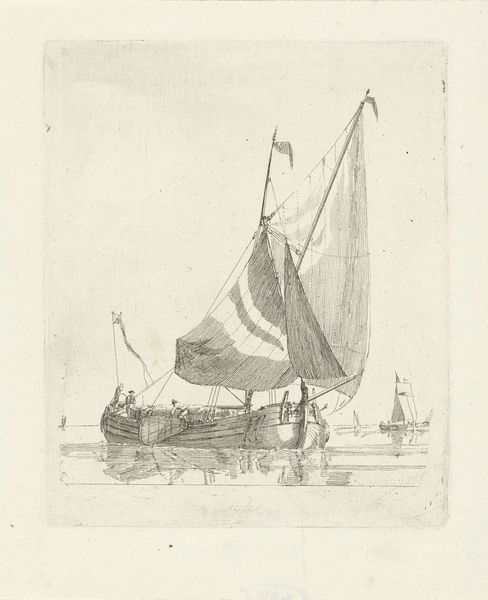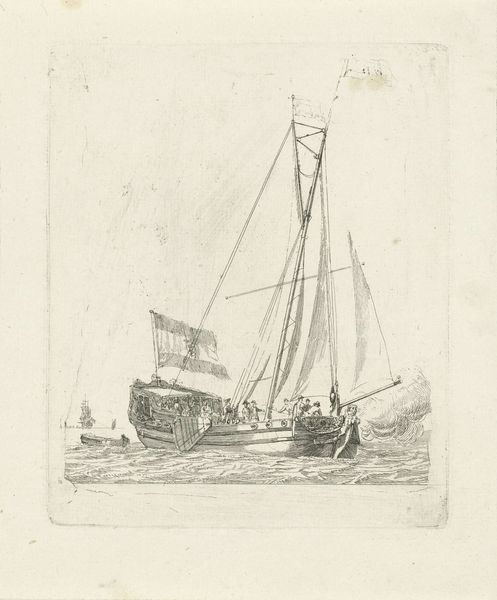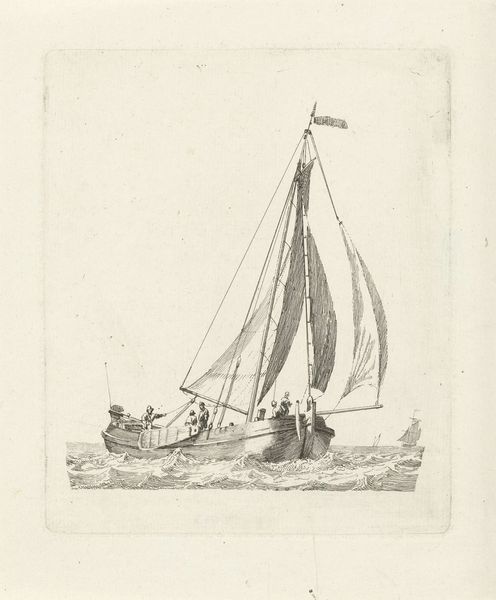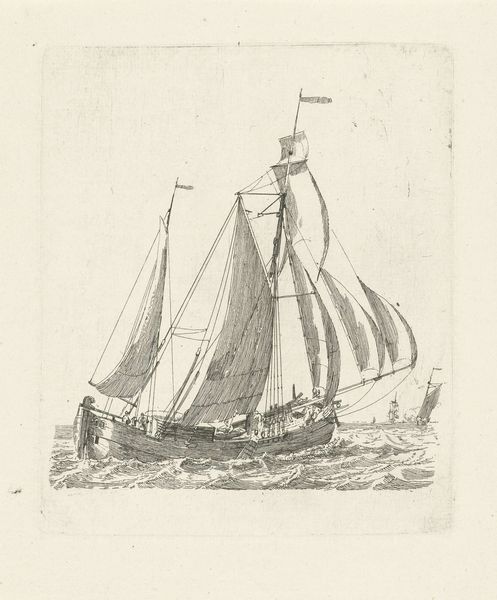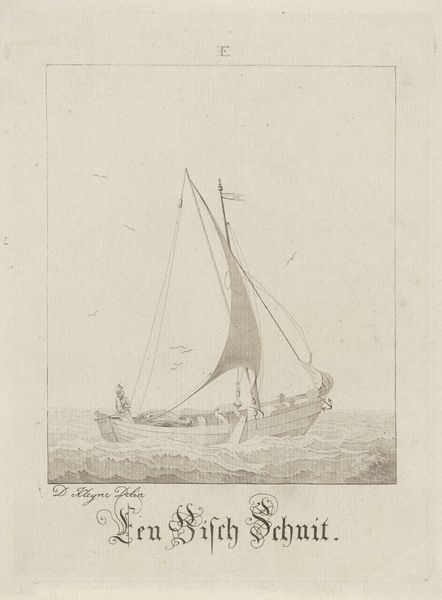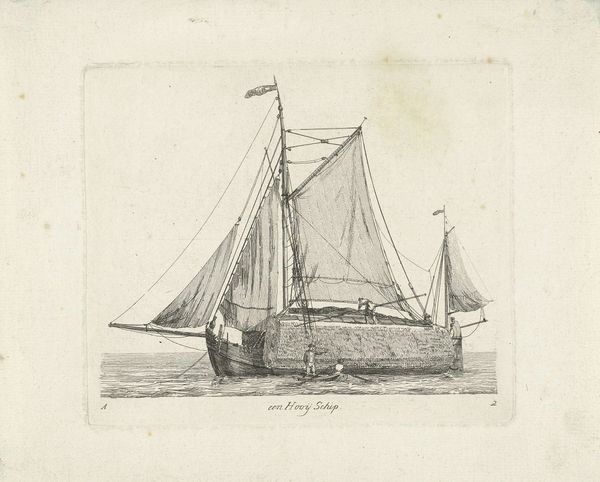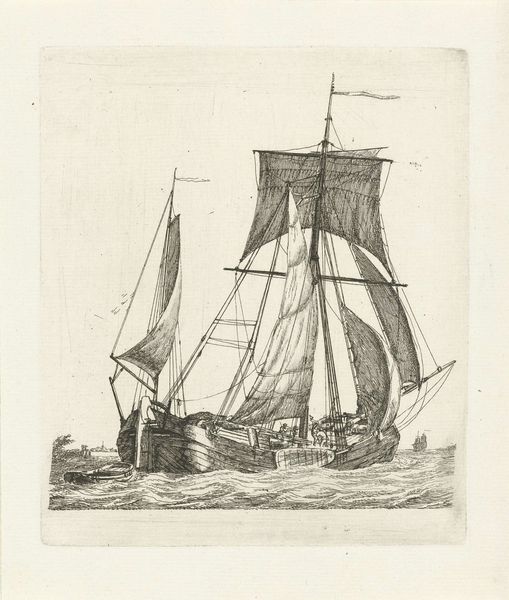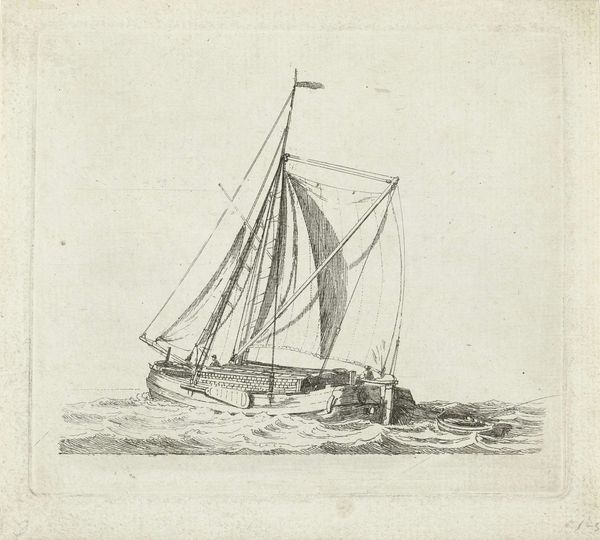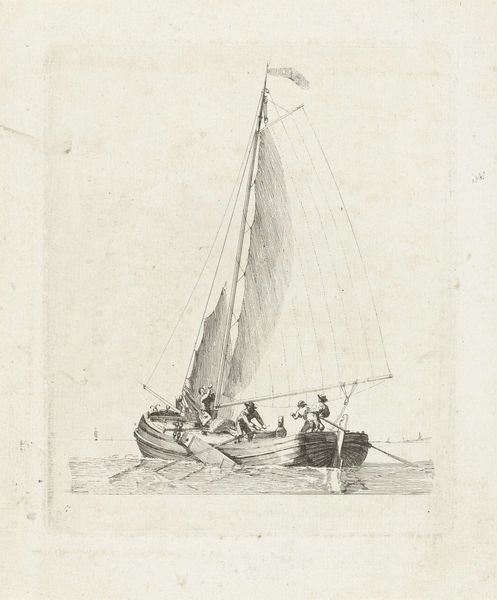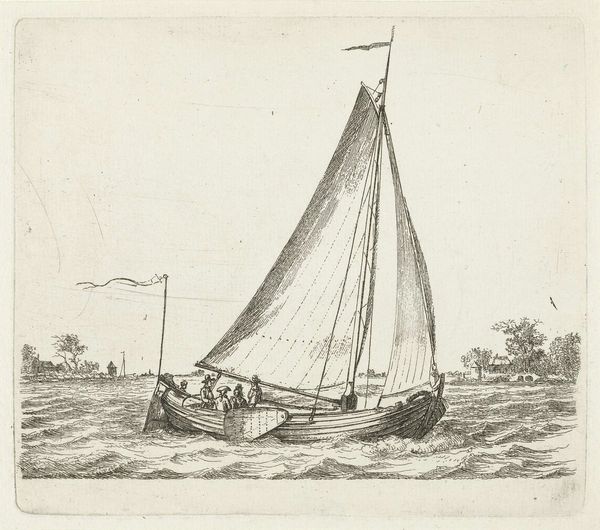
drawing, print, etching
#
drawing
#
amateur sketch
#
light pencil work
#
quirky sketch
# print
#
pen sketch
#
etching
#
landscape
#
personal sketchbook
#
idea generation sketch
#
sketchwork
#
pen-ink sketch
#
line
#
sketchbook drawing
#
realism
#
initial sketch
Dimensions: height 154 mm, width 122 mm
Copyright: Rijks Museum: Open Domain
Editor: Here we have Gerrit Groenewegen's "Turfschip, een zogenaamde Venus" from 1787, a drawing, etching and print. The delicate linework almost makes the ship look like it's dancing on the waves. What stands out to you? Curator: The dynamism is indeed achieved through the artist's calculated use of line. Observe the contrast: the meticulous hatching that defines the hull, giving it weight and volume, against the sparser, more gestural marks depicting the water. It’s a study in controlled versus expressive mark-making, wouldn’t you agree? How does the line quality influence your reading of space and depth? Editor: I see that, yes. The hull feels solid, the waves less so, suggesting movement, even though it's a static image. What is the effect of having figures so small compared to the ship itself? Curator: Precisely. The relative scale underscores the dominance of the vessel. One can interpret this through formal relationships; the figures are merely functional elements activating the space, almost absorbed by the mechanics of the composition itself. Consider how their placement and posture either enhance or detract from the overarching visual rhythm created by the lines. Does the subject hold clues? Editor: That's interesting. I initially saw the ship and the people as the focus, but thinking about your idea about visual rhythm makes the image about the interplay of forms, the lines and textures against the blank paper, more than the literal depiction of the ship. Curator: Precisely. Form precedes function. The interplay is precisely what directs our gaze, dictating how we "read" this pictorial space, guiding the very meaning that emanates. What we must understand is the line in service to spatial dynamics and abstract articulation. Editor: That makes a lot of sense. I’ve always been drawn to what the artwork represents, the subject. It gives me another perspective. Thank you. Curator: My pleasure. And now you may contemplate it a bit further with your revised lens.
Comments
No comments
Be the first to comment and join the conversation on the ultimate creative platform.
